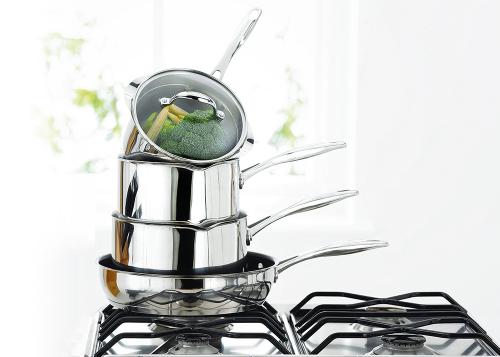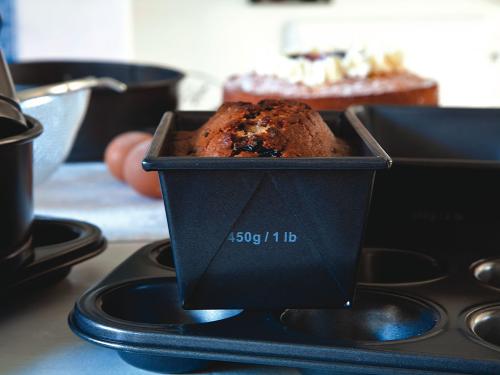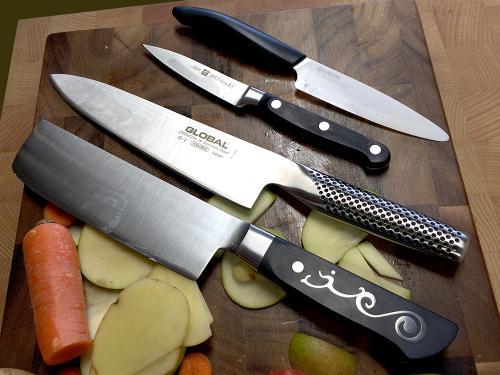Tableware Buying Guide
Categories:
Choosing the right tableware for your kitchen or dining room is usually recognised as one of the ‘finishing touches’, turning the area into the focal point of your home. It can turn the mundane and functional item into a design statement, and can complement your kitchen or dining room design to finish off an area into a desirable living space.
The dinner table is often the one location where all the family can gather and interact each day, and will also be the hub of any entertaining, so having it look just right, with the right level of accessories and extras, will make all the difference.
The difficulty comes in that there are so many items that can make up this category, that where do you draw the line. You may be adding to a collection, or building your own.
The colours and patterns may need to match the décor, or it may be that showing off ‘the brand’ is all that matters. As the cost of these accessories has come down over the years, many people have two sets; a basic range for everyday use, and their ‘Sunday best’, for special occasions.
This guide aims to explain the differences and benefits of each of the products and where they will benefit your collection and your lifestyle.
Bowl Bowls have many different uses and functions in the kitchen and dining room and come in many different sizes, styles and designs. They can be used when cooking or baking but are mainly used for serving food – from cereals to desserts. Depending on what material the bowl is made from they can be used for holding hot foods and liquids, whereas others should can only be used for cool items - the manufacturer’s guidelines will advise you of these particular products. Likewise some bowls can be oven and/or microwave safe.
Butter Dish Butter dishes are small rectangular dishes or plates with a deep lid with its own handle that will fully cover a block of butter. The butter can be hygienically stored and kept at room temperature, making it easier to spread. A butter dish can be part of a collection, matching your crockery and other tableware.
Cake Stand Fantastic for showing off your homemade baking triumphs, a cake stand makes the perfect tableware centrepiece to a tea party or celebration. A cake stand can be used as a base for your cake when decorating it, but generally they are used to display and serve your cake from. Some designs come with a domed lid so the cake can be stored in situ. Others are tiered (normally two or three tiers) for displaying smaller treats or sandwiches. The tiers are joined together by metal stems which can be unscrewed when the cake stand is being stored.
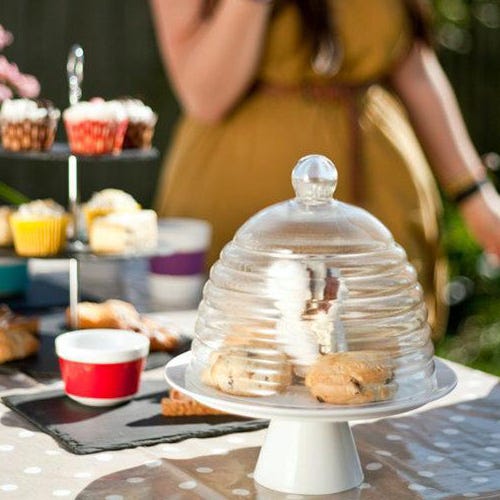
Cups & Mugs Teacups and saucers are an important part of a British afternoon tea. The best teacups are made from porcelain as it is thought to enhance the flavour of the tea. Coffee cups are available in a range of styles and designs depending on the type of coffee you like - espresso cups being the smallest. Latte cups tend to be tall and narrow and Cappuccino cups resemble a teacup but are normally larger with a wider surface area. Generally made from ceramic, they can also be made of glass (these are often double-walled to keep the contents warmer for longer as well as protecting your hands). Mugs come in a large range of styles and sizes and tend to barrel-shaped with a large handle. These are suitable for all types of drinks – tea, coffee, hot chocolate etc.
Cutlery Cutlery can be a very personal choice; it’s got to feel right in the hand, be functional, and hopefully complement your table décor. It comes in a variety of designs, traditional parish designs, modern contemporary designs, and different metallic finishes and colours. Everyone uses knives, forks and spoons, but there are types of cutlery out there with specific designs to cater for almost any food, from fish knives, to pastry forks, and many more. Good cutlery is generally made from 18/10 stainless steel, which offers the best combination of durability and appearance, but can also have Silver plating, plastic handles and several other materials. Cutlery is often purchased in sets, either in wooden canteen boxes or without, but can also be bought as individual pieces to build your perfect set.
Egg Cups Egg cups are used for serving and eating boiled eggs. The traditional design of an egg cup is a basic cup shaped top with a flared base for stability. Modern designs include mini buckets or pails. They are used to hold the egg whilst eating, preventing you from burning fingers on the hot shell. Can be bought individually or as a tableware set.
Food Warmer Food warmers are metal plates with patterned perforations on the surface, underneath which tea lights are placed to provide a flame for heating up the plate. These come in different sizes allowing more dishes to be sat on the top for keeping home cooked dishes and takeaways hot whilst serving.
Gravy Boat / Jug Gravy boats are used for serving gravy at the dinner table. It can be made from stainless steel or stoneware, which are both good materials for retaining heat. Similar in shape to a boat, one end will have a large handle, the other a wide pouring spout ideal for pouring thick gravy, sauces or cream. They sometimes come with their own saucer to catch any drips. A gravy jug is used for the same purpose but, as the name implies is jug shaped. Some are insulated and have lids to keep the gravy warm.
Milk / Cream Jug Milk or cream jugs can be any shape or size but all will have a pouring spout and most will have a handle. These jugs can be bought separately or as part of a tableware collection. Generally made from a ceramic material, they are also available in stainless steel.
Plates Plates are one of the main items in a tableware collection. There are many different styles of plates, which can be round, square or oval and decorated or patterned as part of the collection. The larger dinner plates are used for main meals whilst smaller side plates are used for bread and butter. Going bigger again are serving, or ‘charger’ plates.
Ramekins Ramekins are small round dishes used for baking individual dishes. Their straight sides are perfect when making souffles as it allows the mixture to rise up to create fluffy light desserts. They are also used for another classic dessert – crème brûlée. Because they have to withstand extreme heat, ramekins are normally made of stoneware of heat-proof glass. These little dishes also have several other uses – they are great for prep work in the kitchen and can also be used to serve nibbles and dips.
Salad Bowl Salad bowls used to serve salads at the table. Larger than a standard bowl they have rounded shallow sides making it easy to scoop the salad out. Salad bowls are normally made from ceramic and can be quite decorative. Some will be made from wood with matching wooden salad servers. Salad bowls can be a colourful feature to a lunch menu as the large bowl with a bright colourful salad in it will stand out on the table.
Salt / Pepper / Herb / Spice Mills Salt & Pepper Mills are used to add seasoning to food. There are many different styles to choose – from traditional to modern. Salt and Pepper mills are all about one thing, the grinding mechanism. Salt mills will have either a plastic, or ideally ceramic, grinding mechanism (never steel, as salt will corrode this). They are used to grind larger pieces of sea salt into smaller grains, releasing more surface area of the salt to better season your food. Pepper and spice mills will have either a carbon steel, or ideally again a ceramic, mechanism. Again, and more importantly for pepper and spices, they crush the peppercorns to release fresh flavour, adding a seasoning dimension that pre-ground pepper cannot duplicate. Pepper mills are good for dried spices and peppers. Both types of mill can be adjusted to allow for a fine or coarse grind according to your needs. There are new versions of these mills, often called chilli mills, which work on fresh peppers and spices, with a higher moisture content. These have a carbon steel grating mechanism, which is very fine, and grates rather than grinds, giving the very best aromas and flavours to your seasoning.
Sauce & Jams Pots Condiments pots for sauces and jams are small tubby pots, generally with a lid to keep the contents fresh. Some come with a serving spoon or in the case of honey, a dipper. Many of these are very decorative or patterned to brighten up any table.
Storage Storage jars and containers are perfect for keeping things like sugar, tea, coffee and flour dry. The different sized containers can be clear or coloured and be made from stoneware, ceramics, plastic or metal. Most containers with have a sealed air tight lid for freshness and can also be used to contain dried foods like pasta and rice.
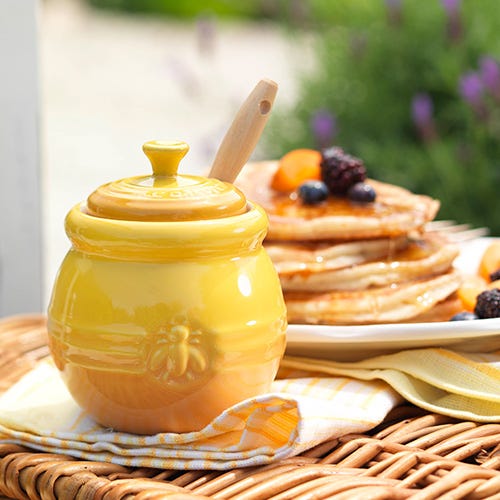
Sugar Basin/Bowl A sugar basin or bowl is a lovely way of presenting and storing sugar. These little basins accommodate a small amount of sugar and a spoon to match for serving. Available in stainless steel or stoneware, these can be intricately decorated and patterned to match your collection or as a standalone item and normally come with a lid.
Table Mats & Coasters Table mats and coasters normally come in matching sets of 4 or 6. They generally have wipe clean laminated fronts and cork backs to protect your table or work surface from scratches and heat damage. Other materials include slate, rattan and cork.
Trays There are many different types of tray, but their main purpose is to transport food and drink or as a receptacle to store small items. Standard trays will have two handles (often incorporated into the raised rim of the tray) and can be rectangular, square or round in shape. They can be made from plastic, melamine, enamel or wood and often will form part of a collection to match table mats and coaster. Other variations of tray include a lap tray which has a cushioned base – ideal for eating TV dinners on! A sandwich tray is smaller than a standard tray - ideal for a mug and plate. A trinket tray is the smallest of the bunch and is great for storing small nick-knack’s!
Trifle / Compote / Bon Bon A compote (or comport) is a footed bowl or plate used to serve food. The name dates back to the Victorian era, when a dessert of fruits cooked in syrup called a compote, were all the rage. Normally made from glass or ceramic it features a flared rim to make serving from them easy. Trifle bowls are similar in design but feature vertical sides. A bon bon jar is a glass jar with a lid originally designed to store bons bons but can be used to store a variety of different foods or products.
Vase A vase is a handle-less container used for displaying flowers and bouquets. Normally made from glass, some vases are coloured or decorated with patterns on the surface. Smaller vases can sit on the table to accommodate a small posy of flowers.
Cleaning and Storage
Cleaning
Crockery such as plates and bowls are generally ok for dishwasher use, however always check the manufacturer’s guidelines on this as some may not wear well or patterns and colours may fade after prolonged dishwasher use. Alternatively, clean gently in hot soapy water.
Storage
Crockery can be stacked together, but do so with care not to scratch off any patterned or coloured areas. Delicate items like china and glass should be handled carefully and not stored with other heavy or sharp items that could damage or break them. Bulkier items should be stored separately and not stacked where they could damage other smaller delicate items.
Tableware Microwave use
Most pottery, stoneware, porcelain and china is perfectly fine for microwave use. However, any pattern or design that incorporates a metallic element or highlight will not be suitable. Always check the manufacturer’s recommendations before use.

